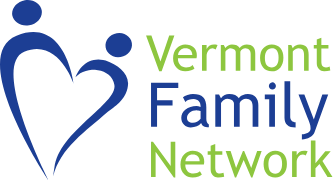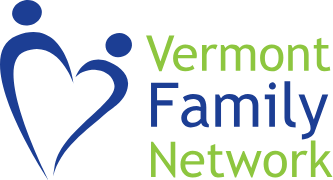Printable Version of Planning Tips for Transition-Age Youth and Their Families
Transition to Adulthood Fact Sheet
There are four main areas of transition that should be addressed in a student’s Individualized Education Program (IEP) are training, education, employment and independent living. These four transition areas include:
- Adult services and community resources
- Daily living skills
- Independent living
- Postsecondary education
- Vocational training
- Community participation
- Continuing education
- Integrated employment (including supported employment)
- Personal and social skills
Transition planning is an ongoing process that starts with a student’s interests and preferences. Planning may need to start as early as age 14, especially for students who have more intensive needs but all students on IEPs by age 16 must have a transition plan. Some students with disabilities may require a multiyear plan that leads to completion of graduation requirements. Graduation is based on proficiency-based requirements that are tied to a Personalized Learning Plan (PLP).Students on multiyear plans may attend school longer than four years (up to their 22nd birthday); if the IEP team decides, a longer stay is necessary for the student to graduate.
In 2004, the Individuals with Disabilities Education Act (IDEA) expanded the requirements for transition planning to include the following steps: Transition services are offered to prepare students to make the transition from the world of school to the world of adulthood. IEP teams must develop appropriate, measurable postsecondary goals that are based upon individual ongoing age-appropriate transition assessments related to training, education, employment and independent living skills (if appropriate); IEP goals must reflect the student’s strengths, preferences, and interests; and a statement of transition services must be included in the IEP to assist the student in reaching transition goals.
The results of transition assessments should be documented in the IEP and reviewed with the student and IEP team. These results will help guide the development of the transition goals and objectives.
In addition, upon completing high school, students on an IEP must receive a Summary of Performance (SOP) from their school that provides information on his or her current levels of academic, cognitive and functional performance. IEP teams should identify each student prior to graduation and actively include the student in developing the SOP. The SOP form and accompanying documentation can provide information to help the student make a smooth transition to postsecondary education and/or employment. Postsecondary institutions can use the SOP as a tool to assess accommodations the student will need in the next education setting.
Planning Tips for Families
Timelines
The following is a list of activities to help students and their families take steps in middle and high school in preparing for the transition to independent living, adult services, employment and postsecondary settings. Each student’s transition plan is unique to the student taking into consideration their preferences, interests, skills and strengths. The more that parents/guardians are involved in the process of transition for students, the better the outcomes for those students.
Please note * is for students on IEPs only
Middle school
Grades 6, 7, and 8 (Ages 12-14)
- Explore high school class selections that will help prepare the student for
postsecondary education - Learn about and access Vermont Student Assistance Corp (VSAC) website
- Complete the assessments in the areas of Interest Assessment, Skills Assessment, and Work Values Assessment and Vocational Interests
- Have discussions regarding career interests
- Identify accommodations for meeting success and equal access in high school classes
- Learn about person-centered planning and self-determination such as a MAPS Process and COACH (Choosing Outcomes and Accommodations for Children: A Guide to Educational Planning for Students with Disabilities)
- Investigate the need for an assistive technology evaluation to identify assistive technology that will enable the student to meet the higher demand for writing and reading skills in high school and to support social and functional communication
- Personalized Learning Plans (PLPs) will be developed in grade 7
- Increase understanding of the student’s disability and how it affects learning
- Learn self-advocacy skills that will enable the student to speak up on his or her own behalf
- Visit high school, meet teachers and Special Education team (for students on an IEP)
- Learn about Career and Technical Education Programs that may be of interest for High school
- Become familiar with the admissions process for students with disabilities pursuing Career Technical Education Programs (CTE)
- Explore transportation needs and public options; arrange for mobility assessment if appropriate+
- Grade 8: complete driver’s potential assessment; identify need for specialized driving instruction
- Develop multi-year plan as needed*
- Plan extracurricular activities
- Consider Extended School Year (ESY)*
- Explore opportunities with Unified Sports with Special Olympics
High School
Grade 9 (Age 15)
- Complete Transition Planning Assessment Form *
- Get to know transition counselors and Youth Employment Specialists from Vocational Rehabilitation; invite to IEP meetings*
- Focus on career awareness and exploration
- Instruction in self-advocacy for both employment and college
- Use assistive technology (computer, software programs, text on tape, tape recorder, etc.)
- Set high expectations for academic achievement; take courses that are challenging
- Learn how to be your own best advocate
- Have the student attend all IEP/504 plan meetings and be involved in transition planning and ask the case manager to help the student lead team meetings
- Talk to the guidance counselor about applying for accommodations for college entrance exams (SAT and ACT), and apply for them. Accommodations take time to get approved
- Explore volunteer opportunities in areas of interest
- Think about participating in summer programs that offer interesting educational, employment and volunteer opportunities
- Start transition assessments
- Explore transportation needs and public options; plan for specialized driving instruction is needed
- Explore opportunities with Unified Sports with Special Olympics
Grade 10 (Age 16)
- Transition Plan in IEP is in place by age 16*
- Focus on career preparation and developing work and self-advocacy skills
- Participate in job exploration through job shadowing, work place visits and
work based learning experiences - If student is considering further education after high school, begin looking at
post-secondary education options and the programs they have in the areas of the student’s interest - Revisit assistive technology for help with school, independent living and postsecondary education
- Prepare for college preparatory tests by identifying college entrance
preparatory programs (online, specific courses, books and software, practice
tests - Take PSAT exam (with accommodations)
- Revisit transition assessments
- Meet with a guidance counselor to assist in the college search and to identify
resources for students with disabilities at college. - Identify scholarship opportunities and explore financial aid.
- Identify independent living skills needed to manage disability/health issues at home, school and in the workplace
- Identify transition health assessments in developing IEP goals
- Discuss graduation date, review if student needs additional time to pursue transition goals in the IEP*
- Contact and do intake at the Designated Agencies (DA) if the youth needs Adult Services; invite to IEP meetings
- Become familiar with the Designated Agency and the role they play in Adult Services for youth with development disabilities or youth with mental health needs and the supported employment programs offered including Jump on Board for Success (JOBS).
- Sign appropriate consent forms and provide documents as requested
- Think about participating in summer programs that offer interesting educational, employment and volunteer opportunities
- Consider visiting with Green Mountain Self Advocates(GMSA) for the youth to participate in advocacy training, social events and peer support meetings
- Consider visiting with the Vermont Center for Independent Living (VCIL)
- Review and consider additional transition assessments
- Establish graduation date
- Plan extracurricular activities
- Consider Extended School Year (ESY) needs*
- Explore opportunities with Unified Sports with Special Olympics
Grade 11 (Age 17)
- Focus on exploring careers, strengths and interests
- Participate in job exploration through job shadowing, work place visits and work based learning experiences
- Visit postsecondary schools, review college catalogues, attend college fairs and identify and visit college disability support offices (bring documentation, often helpful to review it with a support specialist); find out what service the school provides students with disabilities
- Learn about the Postsecondary Education Consortium Initiative to find postsecondary programs for students with intellectual disabilities and learn how each program may be a good match for the student.
- Take college entrance exams (SAT and/or ACT), perhaps several times with accommodations
- Make sure documentation of the disability and/or psychological testing is current and thorough; know what’s in the student’s high school transcript
- Explore and identify local colleges that may have summer courses to assist students with disabilities in the transition to postsecondary as part of the transition plan
- Ask for college recommendations from teachers and others who know the student’s abilities
- Revisit transition assessments
- Learn about and apply for guardianship if appropriate before the age of 18; consider other alternatives
- Apply for Social Security Income (SSI) if appropriate before age 18
- Contact and do intake at the Designated Agency if the youth needs Adult Services
- Consider participating in Green Mountain Self Advocates (GMSA) Voices and Choices Conference
- Seek out employment and job shadowing opportunities in the area of interest
- Think about participating in summer programs that offer interesting educational, employment and volunteer opportunities
- Learn about the differences between high school and college
- Learn about camps and recreation opportunities for youth
- Explore opportunities with Unified Sports with Special Olympics
- Plan extracurricular activities
- Consider Extended School Year needs (ESY)*
- Explore transition services that are available for contracting with your school.
- Look at financial aid, grants, and other funding sources for postsecondary
- Learn about Students with Disabilities Preparing for Postsecondary Education: Know Your Rights and Responsibilities
- Learn about Schedule A in the Federal Hiring Process for youth with disabilities
Grade 12 (ages 18 to 22)
- Obtain paid employment experience by graduation
- Fill out the Summary of Performance (SOP) with teachers
- Apply to postsecondary institutions and file financial aid forms
- Contact the disability offices at colleges
- Schedule any testing that may need to be updated in order to receive accommodations in the postsecondary setting (must be within 3 years)
- Learn about Section 504 in the postsecondary and employment settings
- Meet with Vocational Rehabilitation and the Department of Labor to explore any assistance needed for transition to postsecondary, education and employment
- Learn about Special Needs Trusts and ABLE Savings account
- Provide available community resources list
- Plan extracurricular activities
- Consider Extended School Year (ESY) needs*
- Learn about the differences in laws and rights for students with disabilities in K-12 and postsecondary
- Review health insurance needs
- Consider needs for family respite and Personal Care Assistance (PCA)
- Meet with the Designated Agency to identify supports and take an intake assessment (if the student has an autism or an intellectual disability)
- Voter registration
- Apply for guardianship or alternatives to guardianship if applicable
- Males, age 18 through 25 with a social security number must apply with Selective Service
- Explore Special Olympics
- Celebrate your child’s gifts, uniqueness, talents, and strengths … all they bring into the world!!

